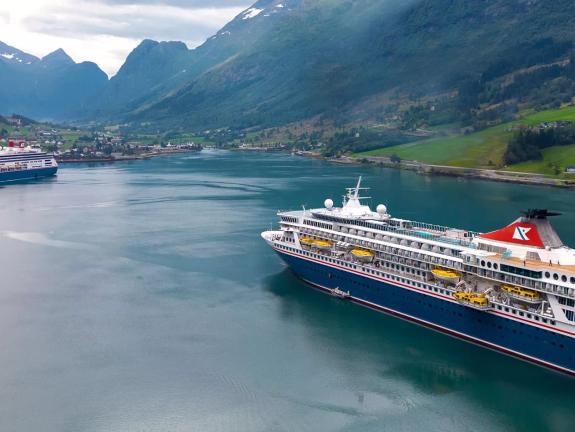Methods for Painting Ship Logos
Painting a logo onto a large ship is a mammoth task that demands both precision and efficiency. Traditionally, this process involves intricate handwork and meticulous attention to detail, but advancements in technology have opened up new avenues for streamlining this process.
Traditional methods
- Hand-Marking and Pop Marks: Precise measurements, painters' tape, and pop marks are used to create a framework for painting. This is time-consuming and requires significant skill, limiting designs to simplicity.
- Paper Stencils: Logos are printed on paper, which are then pieced together and cut out by hand. This manual process is logistically challenging for larger logos and leaves room for error and extended lead times.
Modern Techniques
1 Laser Cut Stencils Process as provided by Laser Cutting Services
- Client provides logo and dimensions.
- Quote and proforma invoice issued.
- Production team sends a proof for approval.
- Stencil is laser cut and delivered within 2-3 days.
- Stencil is easily wrapped around the ship's funnel.
- Adhere stencil using painters' tape and spray mount.
- Painting can be done by outlining with chalk or directly through the stencil.
- Faster, logistically simpler, and ensures precision even for complex designs.

2 Laser Cut ‘Pouncing’ Process as provided by Laser Cutting Services
- Similar initial steps as laser cut stencils.
- Logo provided on paper with laser-cut dash lines outlining the design.
- Paper then is hung on the funnel with painters' tape.
- Spray paint through the dashes and remove the paper to reveal the logo outline.
- Painters join the dashes to create the logo, filling in by hand.
- Combines precision of laser cutting with the artistry of hand painting.
- Efficient and effective, reducing time and potential errors.


Benefits of Modern Techniques
1 Speed and Efficiency
Laser-cut stencils and the 'pouncing' process significantly reduces the lead time compared to traditional methods.
2 Precision and Complexity
Complex logos and intricate designs are easily achieved with laser precision, allowing for a broader range of branding possibilities.
3 Logistical Simplicity
Rolled-up stencils are easily transported and applied on-site, making the process more efficient and manageable.
Conclusion
In conclusion, the marriage of technology, expertise, and artistry in the form of laser-cut stencils and the ‘pouncing’ process is revolutionising the way large ship logos are painted. The streamlined efficiency, precision, and versatility of these methods are not only transforming maritime branding but also setting new standards using technology and traditional craftmanship.




